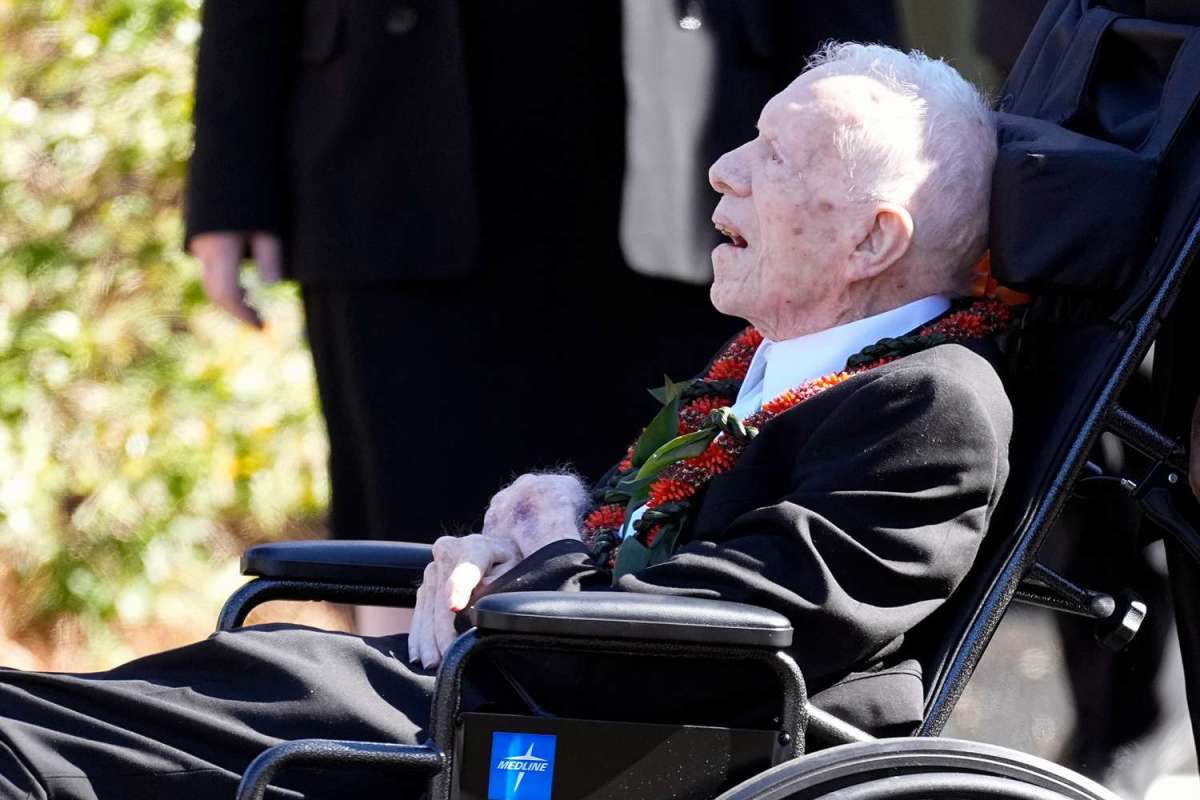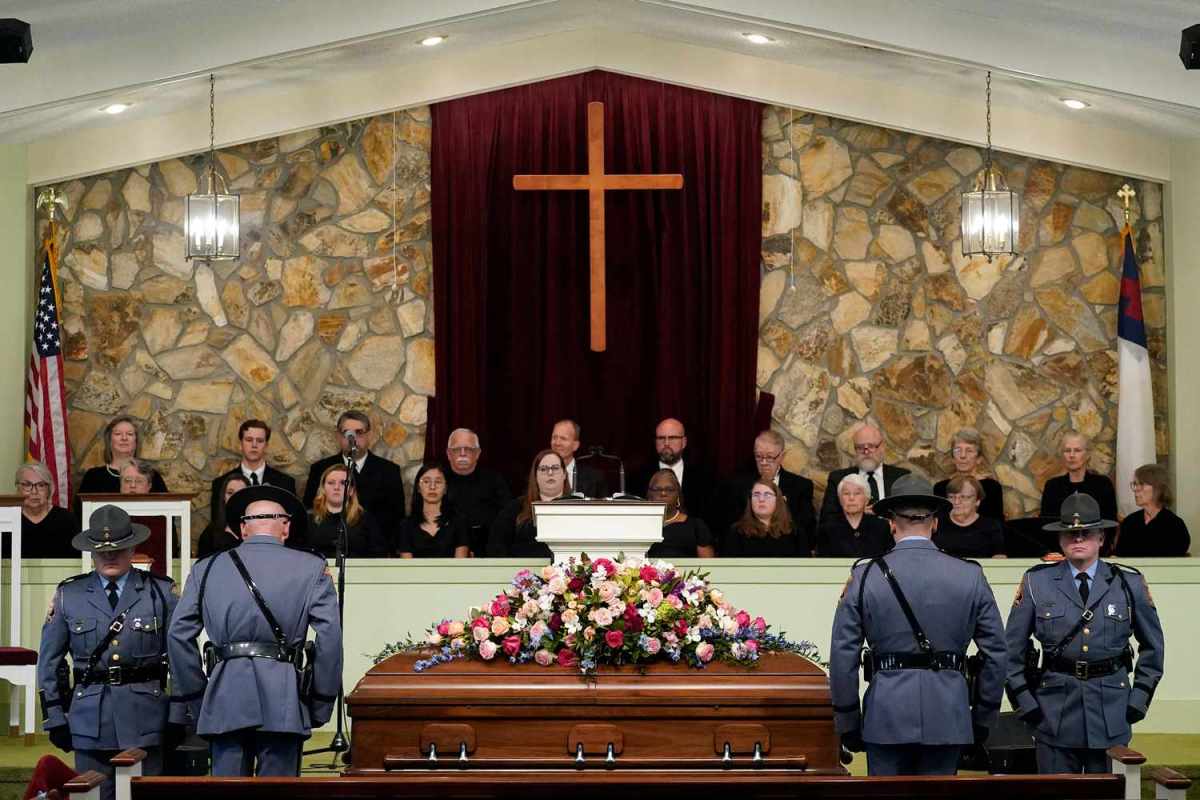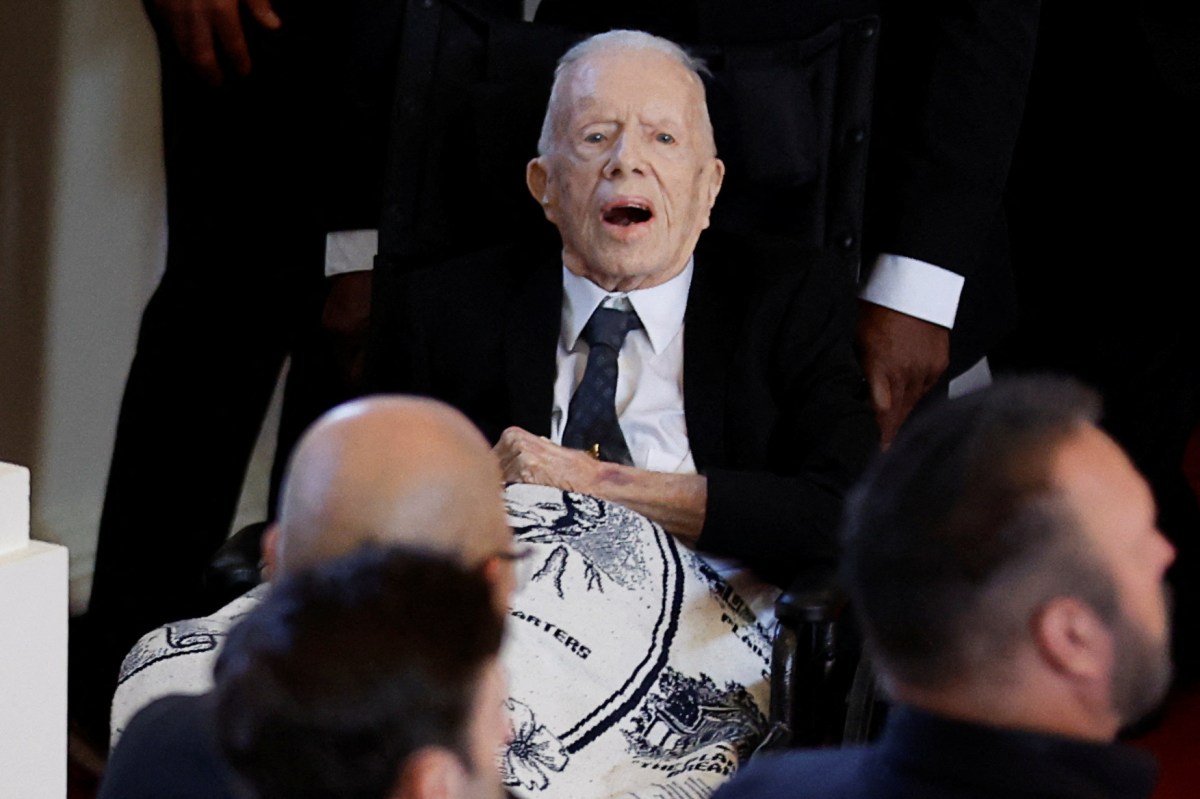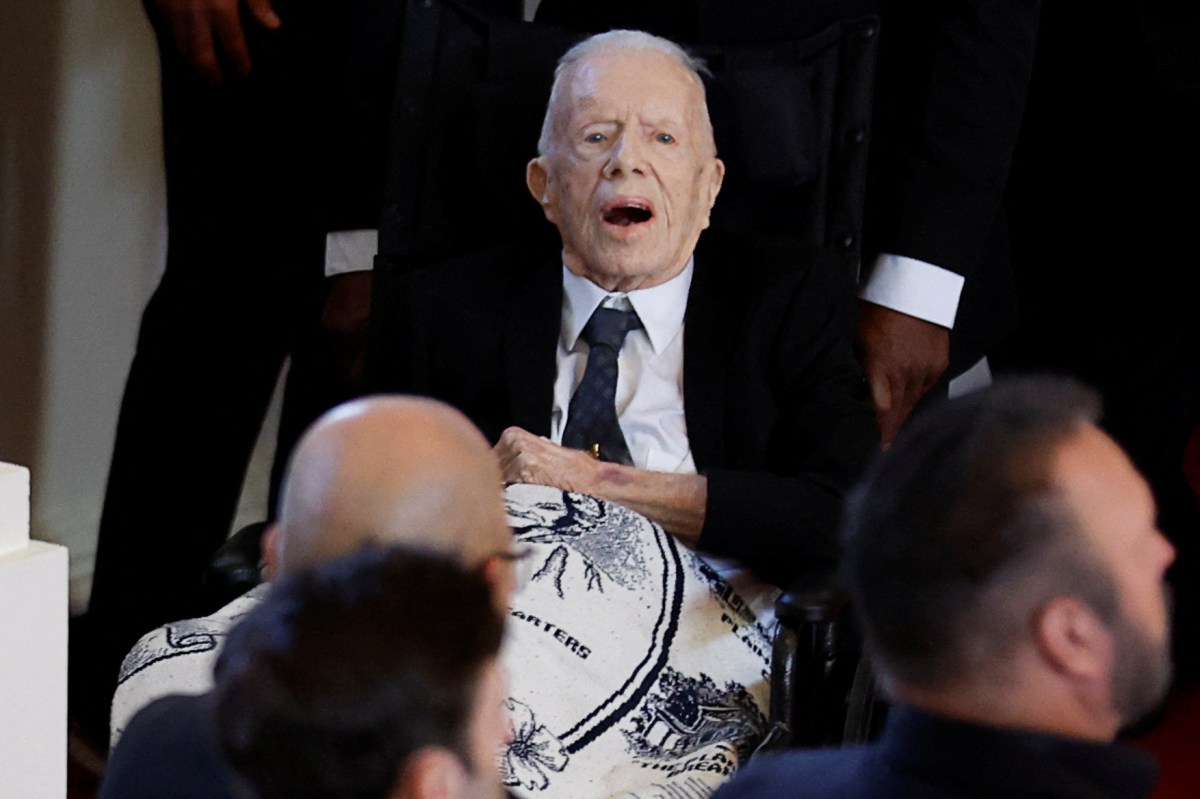Funérailles de Jimmy Carter | Cinq présidents exposent une image – this translates to “Jimmy Carter’s Funeral: Five Presidents Showcase an Image.” This event wasn’t just a somber farewell; it was a powerful visual representation of American history and political legacy. The presence of five former presidents at Carter’s funeral offered a unique opportunity to examine the evolving dynamics of American leadership and the enduring impact of a single presidency.
We’ll delve into the symbolism, the media’s portrayal, and the public’s diverse reactions to this significant event.
This exploration will cover the historical context of Carter’s presidency, the political climate surrounding his death, and the ceremonial aspects of the funeral itself. We’ll analyze the symbolic weight of the five presidents’ attendance – considering their individual relationships with Carter and the political messages their presence conveyed. Finally, we’ll examine the media coverage, public reaction, and lasting visual images from the funeral, piecing together a complete picture of this important moment in American history.
Jimmy Carter’s Funeral: A Nation’s Farewell
The funeral of former President Jimmy Carter marked a significant moment in American history, not only for the passing of a beloved and respected figure, but also for the unprecedented gathering of five living presidents to pay their respects. This event offered a unique opportunity to reflect on Carter’s legacy, the evolving political landscape, and the enduring traditions surrounding presidential funerals.
The Funeral of Jimmy Carter: Historical Context, Funérailles de Jimmy Carter | Cinq présidents exposent une image
Jimmy Carter’s presidency, from 1977 to 1981, is remembered for its emphasis on human rights, its attempts at peacemaking in the Middle East (Camp David Accords), and its focus on energy conservation. While his single term was not marked by sweeping legislative victories, his post-presidency was arguably even more impactful, marked by his tireless humanitarian work through the Carter Center.
His death and funeral occurred during a period of significant political division in the United States, yet the event transcended partisan lines, showcasing a widespread appreciation for his character and contributions.
Presidential funerals follow a specific protocol, blending military honors, religious services, and public mourning. These events are carefully planned, involving extensive coordination between the government, the family of the deceased, and various other organizations. Key elements include a state funeral, a procession, and often a period of national mourning.
A timeline of key events leading up to and including the funeral might include: the announcement of Carter’s death, the period of national mourning, the arrival of dignitaries and mourners in Plains, Georgia, the funeral service itself, and the private burial.
The Presence of Five Presidents: A Symbolic Representation
The attendance of five living presidents – Jimmy Carter (deceased), Joe Biden, Donald Trump, Barack Obama, and George W. Bush – at Carter’s funeral held immense symbolic weight. Each president had a unique relationship with Carter, ranging from political adversaries (like Trump) to close colleagues and friends (like Obama). The presence of five presidents underscored the unique position Carter held in American political life, transcending partisan divides and emphasizing his lasting impact on the nation.
President Carter’s funeral, attended by five presidents, showcased a powerful display of unity. It got me thinking about how different kinds of unity are portrayed, like in the heartwarming sitcom, ‘Abbott Elementary’ Recap, S4, Ep. 9: Always Sunny at Abbott , which shows a different kind of community spirit. The contrast between the somber occasion and the lighthearted show highlights how diverse human connection can be, reminding us of the importance of both respectful remembrance and joyful camaraderie.
The visual representation of these five presidents, each with their distinct public image and legacy, provided a powerful commentary on the evolution of American leadership and the enduring respect afforded to Carter. Their collective presence served as a testament to the importance of civility and national unity, even in times of profound political polarization.
Media Coverage and Public Reaction

Media coverage of Carter’s funeral was extensive, highlighting both the solemnity of the occasion and the symbolic significance of the five presidents’ presence. Social media platforms were awash with tributes, reflections, and discussions of Carter’s legacy. The reactions were largely positive, emphasizing Carter’s integrity, his commitment to service, and his enduring influence on global affairs. However, some voices expressed more critical perspectives, focusing on specific policy decisions or aspects of his presidency.
- Positive Reactions: Numerous tributes praised Carter’s character, his commitment to peace and human rights, and his post-presidential humanitarian work.
- Negative Reactions: Some criticism focused on specific policy choices during his presidency, such as the handling of the Iran hostage crisis.
- Neutral Reactions: Many simply acknowledged the passing of a former president and reflected on the significance of the event.
Visual Representations: Images and Symbolism

A visual representation of the five presidents at the funeral might depict them standing together, perhaps in a semi-circle, near the gravesite. Their expressions would convey a mixture of solemnity, respect, and perhaps even a touch of personal reflection. They would be dressed in dark suits, reflecting the somber nature of the occasion. The setting would be the simple, almost rural, landscape of Plains, Georgia, emphasizing the down-to-earth nature of Carter himself.
An image depicting diverse mourners would showcase a wide range of ages, ethnicities, and backgrounds, united in their shared respect for Carter. The clothing would vary, but the expressions would predominantly reflect sorrow, remembrance, and gratitude. The overall atmosphere would be one of quiet dignity and peaceful reflection.
A poignant moment during the service might be captured in an image focusing on a specific detail – perhaps a close-up of a family member’s face, showing a mix of grief and pride, or a single flower placed on the casket.
An image illustrating the historical context could show Carter’s presidential portrait alongside individual portraits of the five attending presidents, visually representing the continuity and evolution of American leadership, with Carter as a central figure.
The Legacy of Jimmy Carter and its Reflection at the Funeral
Jimmy Carter’s legacy is multifaceted, encompassing significant contributions to American society and global affairs. The funeral served as a powerful platform to reflect on and celebrate these contributions. The presence of the five presidents further underscored the lasting impact of Carter’s life and work.
So, five presidents showed up for Jimmy Carter’s funeral – quite a display of respect! It makes you think about the weight of leadership, and how even amidst such solemn occasions, political sparring continues, as you can see in this CNN article about Gov. Newsom responding to Trump’s wildfire blame. The contrast between these events highlights the different scales of political conflict, but both show the complexities of power and legacy.
- Human Rights: Carter’s unwavering commitment to human rights advocacy, both during and after his presidency, is a defining aspect of his legacy. Examples include his work with the Carter Center to promote democracy and human rights globally.
- Peace and Diplomacy: The Camp David Accords, brokered by Carter, remain a landmark achievement in Middle East peacemaking.
- Environmentalism: Carter’s focus on energy conservation and environmental protection set the stage for future efforts to address climate change.
Final Conclusion

Jimmy Carter’s funeral transcended a simple memorial service; it became a powerful tableau reflecting on his legacy and the complexities of American politics. The presence of five former presidents underscored the profound impact Carter had, not only on his contemporaries but also on the nation’s political landscape. By analyzing the symbolism, media coverage, and public reaction, we gain a deeper understanding of Carter’s lasting contributions and the continuing relevance of his life’s work.
The images from the funeral, with their subtle expressions and carefully orchestrated symbolism, serve as enduring reminders of a life dedicated to service and a legacy that continues to shape discussions about leadership and public service.
FAQ Summary: Funérailles De Jimmy Carter | Cinq Présidents Exposent Une Image
What specific roles did each of the five presidents play in the funeral service?
So, five presidents showed up for Jimmy Carter’s funeral – quite the send-off! It got me thinking about completely different things, like how to catch some serious hoops action. If you’re a fan, check out How to watch the UConn men’s basketball team as they take on their next opponent. Anyway, back to Carter’s funeral; it was a pretty powerful display of respect, wouldn’t you say?
While the exact roles weren’t publicly defined, their presence itself served as a symbolic gesture of respect and acknowledgment of Carter’s legacy. Each likely had a personal connection with Carter influencing their participation.
What was the most common theme expressed in public reactions to the funeral?
Many expressed admiration for Carter’s character, his dedication to peace and human rights, and his post-presidency service. There was widespread respect for his life and achievements.
How did the media frame the event?
The media largely focused on the historical significance of five presidents attending, highlighting the unity and respect shown across political divides. Carter’s legacy was also prominently featured.
